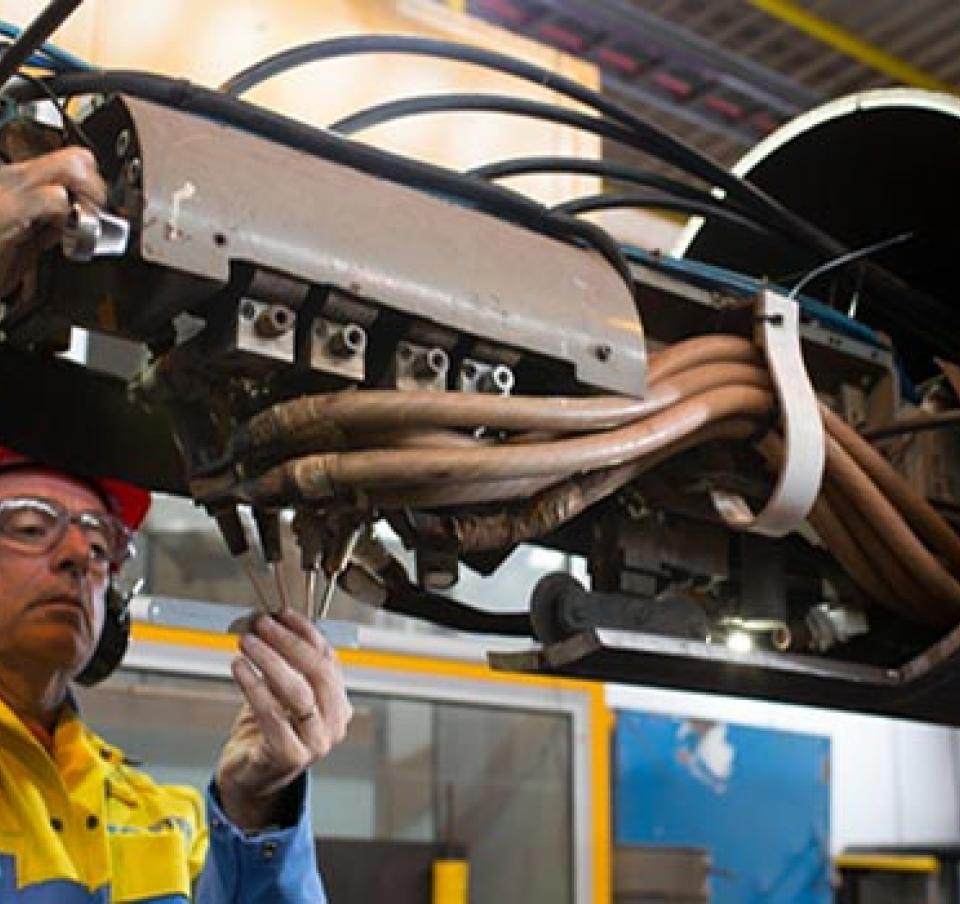Hartlepool 20" Pipe Mill is located in the North East of England with an annual production capacity to produce 220,000 tonnes of tube products for the construction, engineering, and energy infrastructure markets.
The only greenhouse gas emissions from Hartlepool 20" Mill are emissions of carbon dioxide resulting from the combustion of natural gas in forming and heat treatment processes.

Hartlepool 20" Pipe Mill is located in the North East of England with an annual production capacity to produce 220,000 tonnes of tube products for the construction, engineering, and energy infrastructure markets.
The Hartlepool site was awarded first place at the 2016 Tata Steel Excellence awards for the Green Award with a proactive approach to the environment which has provided a vehicle for change. The environmental plan drove costs down to increase competitive edge of the site through water and energy consumption reduction and improved safety and welfare concerns through noise and dust reductions.
- Greenhouse gas emissions
- Resource use and waste management
- Water extraction
- Transport impacts
- Employment and skills
- Local communities]
- Performance data
Greenhouse gas emissions
The only greenhouse gas emissions from Hartlepool 20" Mill are emissions of carbon dioxide resulting from the combustion of natural gas in forming and heat treatment processes. Indirectly, the site contributes to CO2 emissions associated with the consumption of electricity for conveyance, pumping, cooling etc.
Key focus areas for reduction in CO2 relate to the efficient use of natural gas on furnace operations and electrical efficiency. Initiatives include:
- Improvements made to the furnace to reduce heat losses and fugitive emissions
- Flexibility of the workforce to allow breaks during load management periods
- Working groups have been put together to plan and implement our road to Net Zero
- The site has recently completed an “Energy Wave” process, which involved taking a focused look at one plant area at a time and doing everything possible to cut down on energy use
Hartlepool is covered by a new energy efficiency governance process established within Tata Steel Europe, whereby its energy performance has been compared to a benchmark as part of a gap analysis exercise. The site has generated a range of schemes aimed at bridging the gap with best practice. Internal targets for improvement have been established and Tata Steel Europe’s Chief Technical Officer and his direct reports review the progress of each site towards these on a quarterly basis.
Resource use and waste management
In line with our objective to reduce / eliminate wastes to landfill, we have enacted a number of waste reduction strategies at our Hartlepool plant, as a result of which it has now achieved very high recycling rates, with only an insignificant tonnage of difficult waste unrecovered. It has trained Environmental Representatives to carry out audits on issues such as waste segregation around site to support this and targets are reviewed on a monthly basis.
Water extraction
We have enacted a number of improvements to optimise water consumption, for example:
- Water used for NDT purposes is cooled and re-used within the production system
- Use of open evaporation cooling tower systems to cool re-circulating water in order to minimise raw water use
- Monitoring of potable and industrial water use to quickly identify leaks and initiate repairs
The Hartlepool site previously won an Anglian Water 'Save Every Drop' award for reducing leaks from 12.5 litres/ second over four years to 0.85 litres/ second.
Transport impacts
Transport impacts are managed centrally within Tata Steel and, as such, it is not possible to disaggregate the transport impacts associated with the production and delivery of specific products from specific locations from the total estimate of Tata Steel transport impacts.
- As shipping and logistics activities are managed centrally within Tata Steel it is not possible to disaggregate the CO2 emissions associated with the production and delivery of specific products from specific locations from the total estimate of Tata Steel transport impacts. See the general page for [ and some of the steps we are taking to reduce these.]
Employment and skills
We apply a common approach to employment and skills at all, of our sites. See the general page for information on what [Tata Steel is doing to advance the learning and development of its employees].
Local communities
Hartlepool engages in a range of community initiatives, for example:
- Building relationships with local schools and colleges, facilitating work experience placements, offering engineering apprenticeships
- Supporting local charities and organising fundraising activities such as sponsored runs and collections
- Fundraising to help employees children who are affected by health issues
- Noise reduction measures, including re-engineering production lines, continuous noise monitoring and installation of noise abatement curtains and walls on high noise emitting processes
[Back to top]
Performance data
| Hartlepool 20" Mill | 2016 | 2017 | 2018 | 2019 | 2020 | 2021 | 2022 | ||||||||
| CO2 emission (t) | Verified EU ETS | 12,598 | 14,007 | 15,258 | 13,720 | 10,578 | 11,003 | 10,553 | |||||||
| Worldsteel scope | 19,103 | 23,026 | 27,760 | ||||||||||||
| Water use (m³) | 76,627 | 90,656 | 122,699 | 115,857 | 50,592 | 53,567 | 64,501 | ||||||||
| Waste disposed (t) (% of waste produced) | 18 | 0% | 30 | 0% | 82 | 0% | 36 | 0% | 145.39 | 1% | 41.2 | 0.3% | 36.9 | 0.2% | |
| Waste recovered (t) (% of waste produced) | 14,836 | 100% | 21,864 | 100% | 20,899 | 100% | 22,888 | 100% | 12,676.99 | 99% | 15,590.8 | 99.7% | 17018.0 | 99.8% | |
| Justified complaints (n) | 1 | 6 | 9 | 9 | 6 | 0 | 1 | ||||||||
*internal metrics used for period before site was in EU ETS scope

































































































































































































































